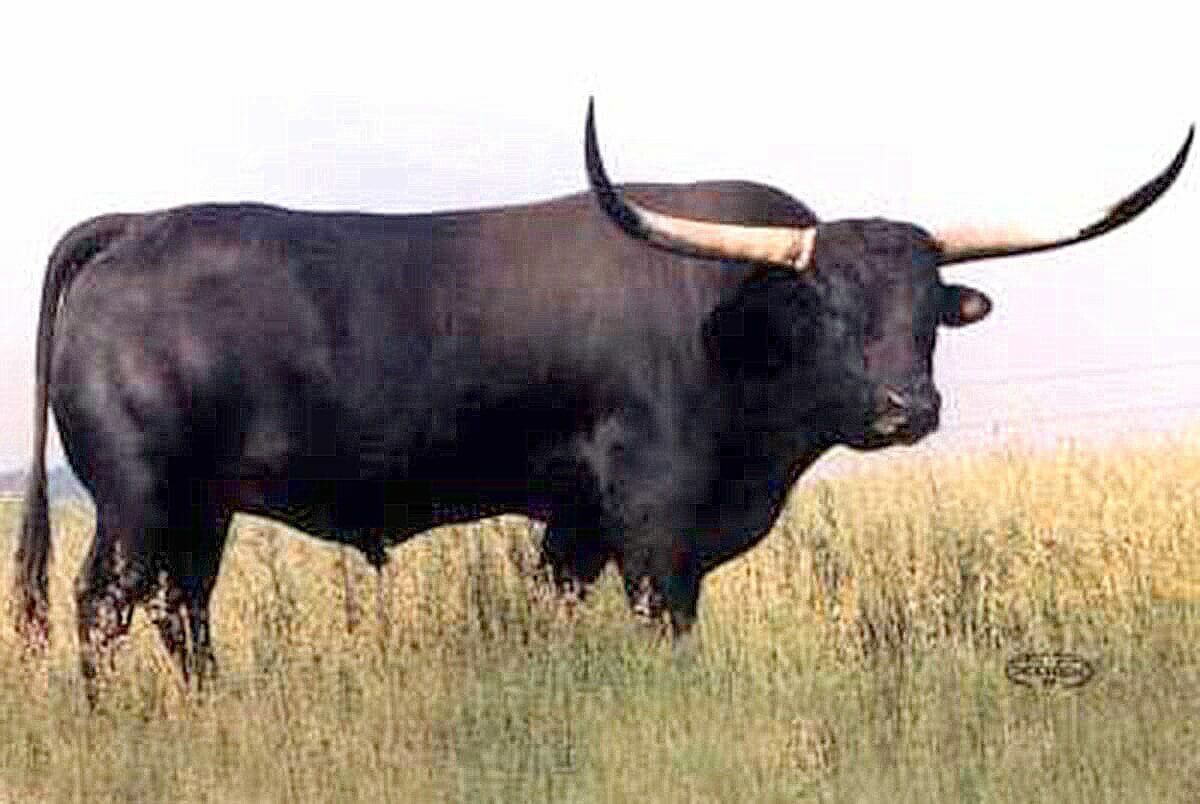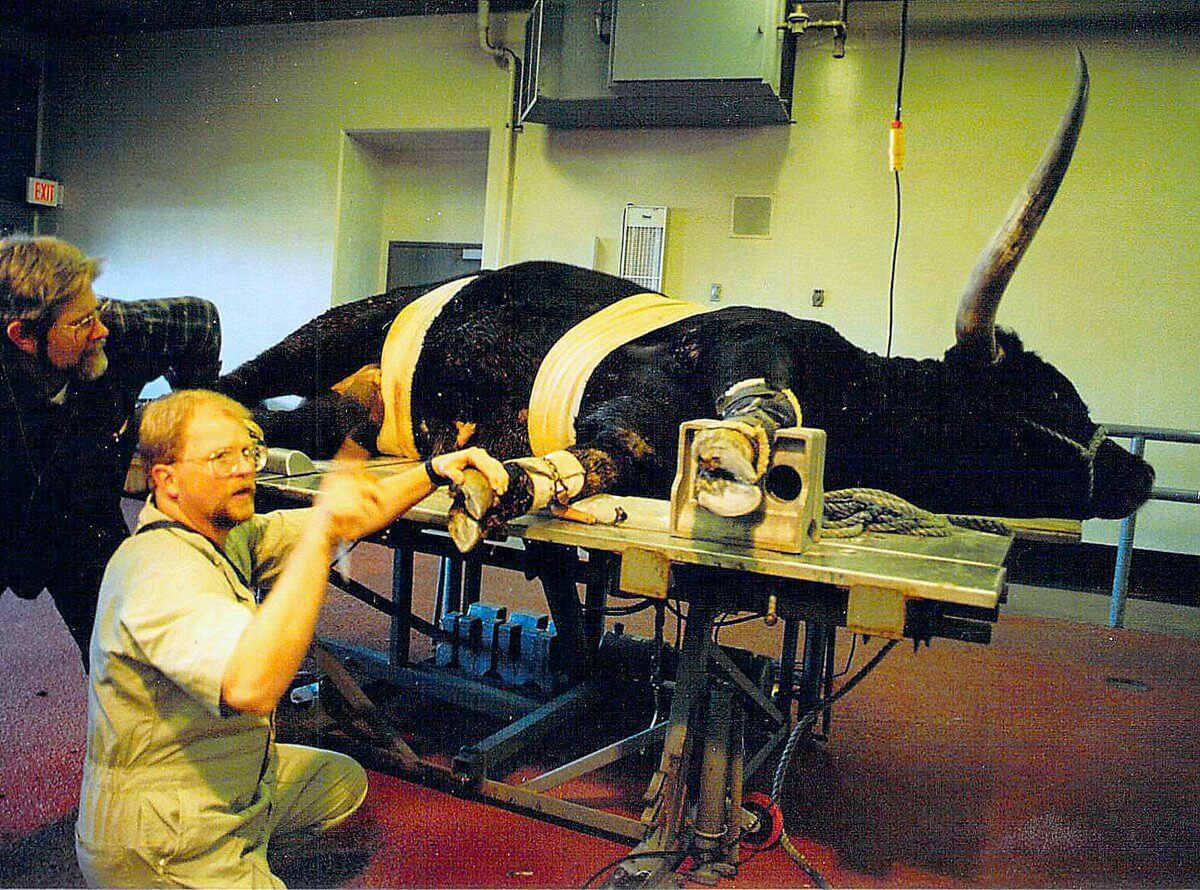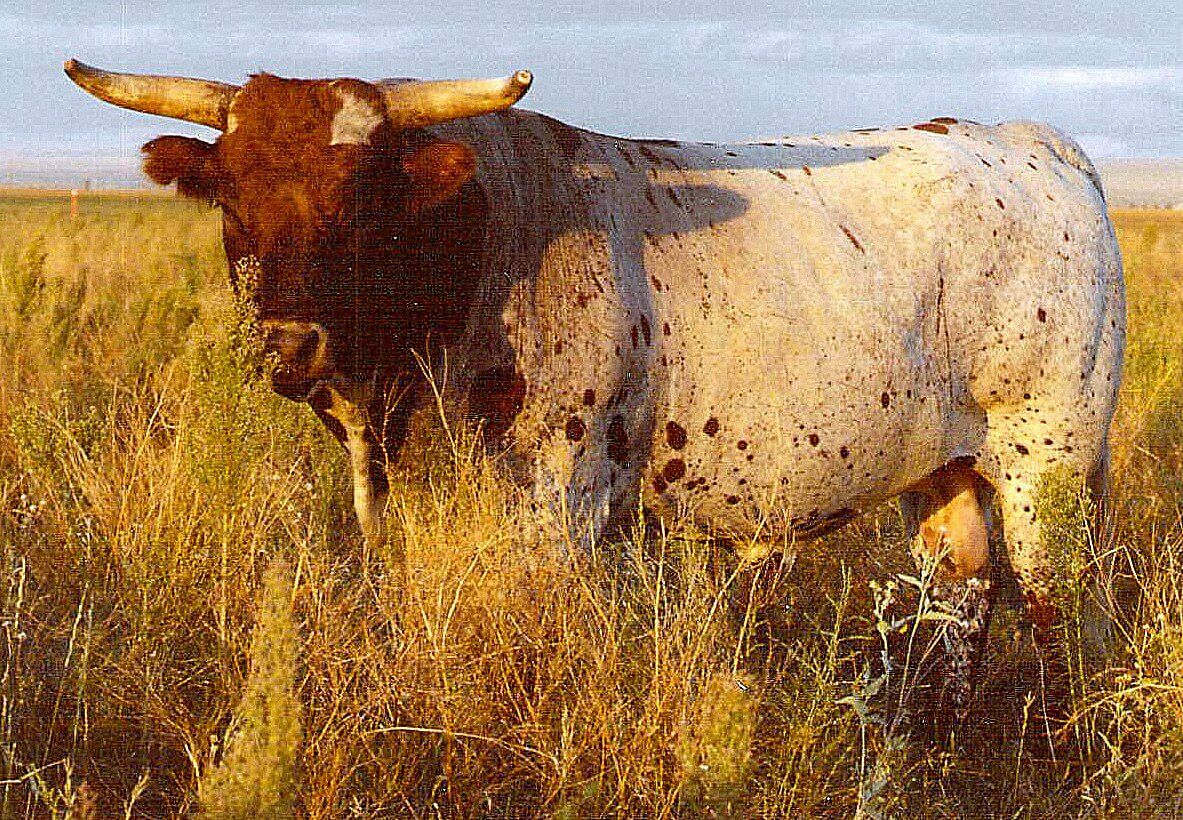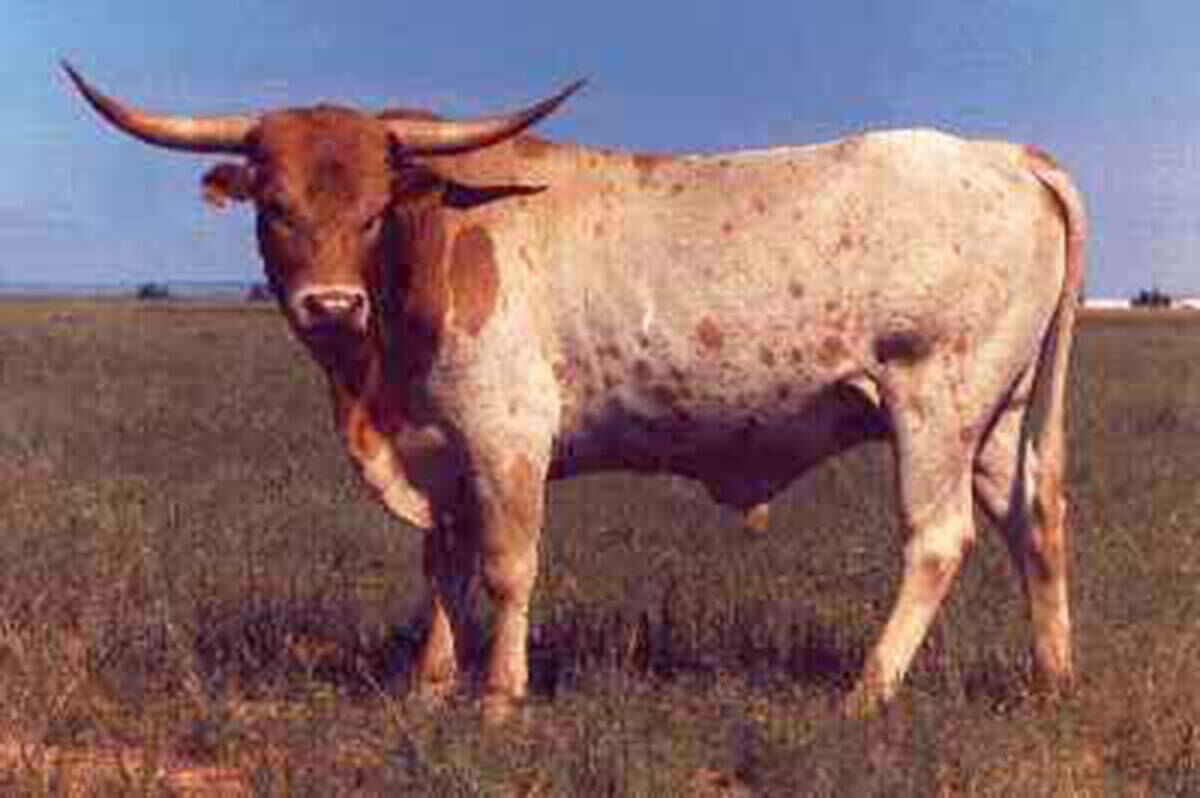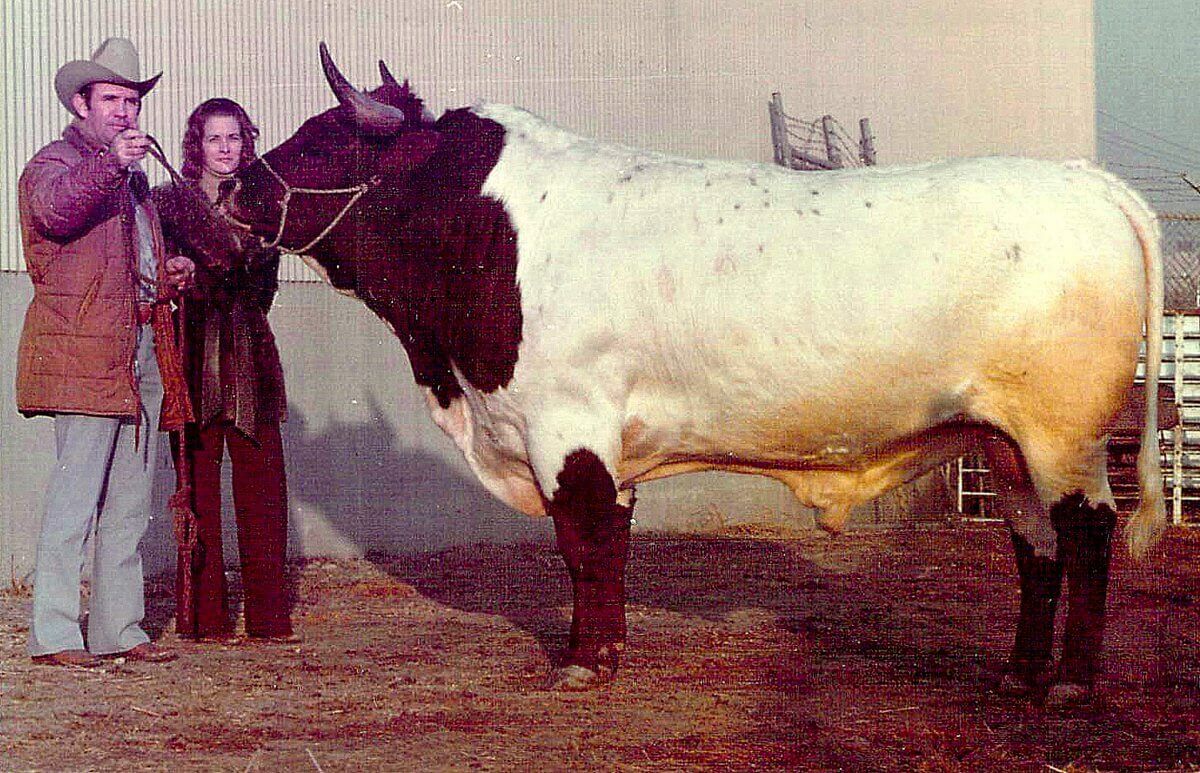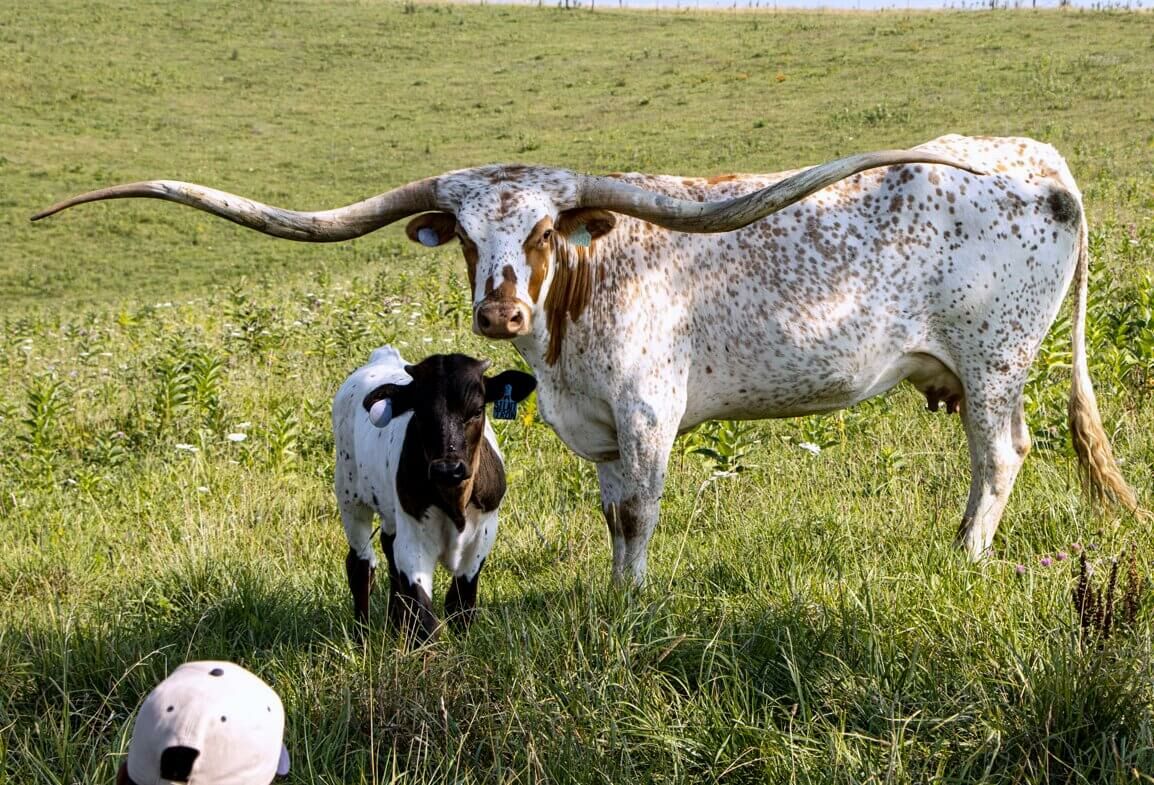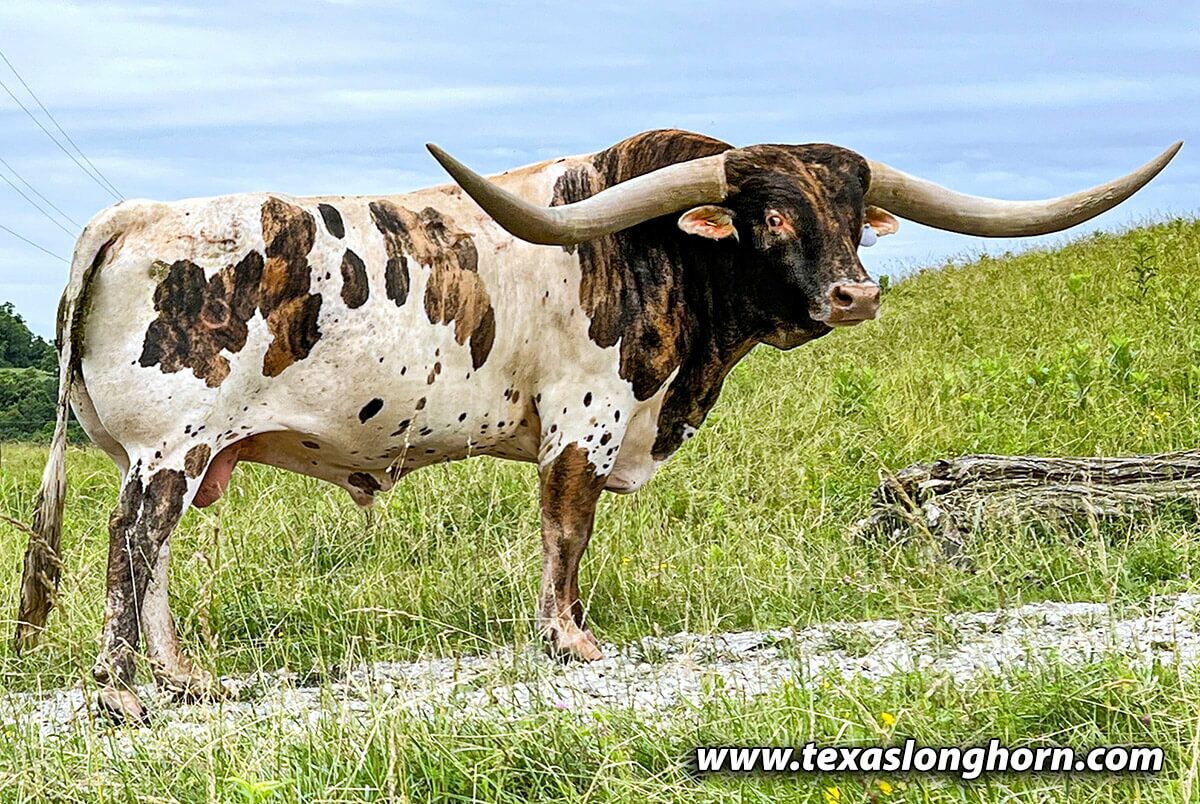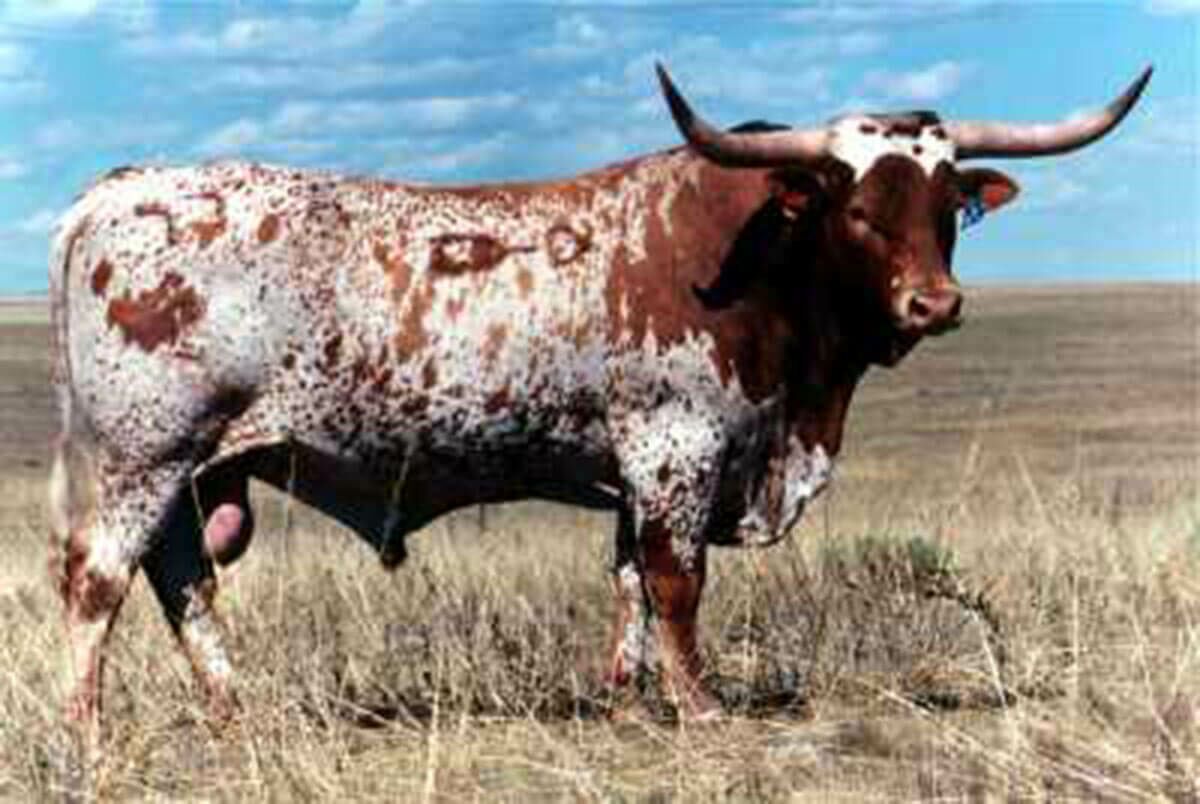In 1977, I found Classic—an unregistered Butler family bull owned by one person and bred by another, who each hated the other. Even though Classic was the largest-horned bull in history at 60", the odds were good he would never sire a registered calf. All of his early calves were falsely registered to other bulls, which was wrong. The torture of dealing with personal conflicts, law courts, estates, and divorces made Classic a nearly impossible challenge to register him legally and make him usable in the industry. (For Classic’s story, see Horn Stew, pp. 41-55.)
With Classic semen, his 60" horn genetics created a lot of excitement. One daughter named Sweet N Low sold for $116,000. Classic was syndicated for $1,000,000, and twenty investors bought semen shares for $50,000 each. The syndicate sold out in a day. Horn enthusiasm was exploding.
Classic brought additional horn into the industry but also a consistent white color and small-frame. Cows ran about 700 lbs and bulls 1100 lbs. Horn was very popular, but fleas came with the dog.
In breeding programs, some individuals never seem to produce progeny as good as themselves. Occasionally—rarely—one contributes a genetic “bounce” and produces offspring better than themselves. To profit from that brilliance, ranchers must battle constantly to locate the forward-bouncers. Identification usually happens, however, only when the animal is well up in years. Discovery takes a long time and patience—but once identified, this trait becomes a focus to breed rare-superior genetics. The results can be wonderful. Quick detection is most valuable.
DCC offers a free series of biographies of many prominent Texas Longhorns, including some descriptions of their contributions to the breed. Collectively, these portraits are a 50-year history of animals informing all the prominent pedigrees. (Click on https://www.texaslonghorn.com/longhorn_info/biographies/index.cfm.)
As numbers grew for the rest of the century after 1977, certain individuals emerged as leaders in forward genetic progress. Here are just a few special ones: King, Bail Jumper, Cowcatcher, Don Quixote, Emperor, Gun Man, Measles, Senator, Overwhelmer, Ranger's Measles, Unlimited, Zhivago, G-Man, Doherty 698, and Phenomenon.
Although many breeders were measuring and fighting to develop more horn, advancement in breed T2T was only about 5" from 1977 to the late 1990’s. Progress was erratic, fast or slow, depending on identifying and using forward-breeding cows and bulls.
Some feel this slow progress was a result of splintering desire for different types of cattle. One organization believed only Wichita Refuge (WR) cattle were worthy. Another believed the Butler and only the Butler family was of value. The Cattlemen’s Texas Longhorn Registry (CTLR) promoted early types, mostly Yates, WR, and Marks genetics. Shows run by the Texas Longhorn Breeders Association (TLBAA) used college cattle judges and invented a new show-type of early-developing cattle with very small horns. The record-setting, high-dollar producers went totally for horn, with less interest in the other virtues.
Consider how the current dynamic scene could have been very different under a few changed circumstances. Texas Ranger might never have left Battle Island or been collected. Classic could never have been legally registered. Don Quixote might never have left Chain Ranch. Zhivago was purchased as an unpaid board bill, fortunately not liquidated to a slaughter house. Doherty 698 was purchased from a large coal company in Ohio. The Shadow could have died from infection.
After that 30-year side-bar, now back to The Shadow. His hoof injury cost half a breeding season, but he was 90% good the next year. Although he moved a little slow, he faithfully serviced his large cow herd. After recovering from hoof surgery and siring hundreds of calves, he was bred to Kentucky Blue and sired Shadow Jubilee. She sold twice for $120,000, was a major clone cow, and was one of the first cows to reach 90" T2T. The Shadow was also bred to Zither (by Zhivago) and sired Shadowizm, who reached the mid-70” T2T—some progress.
Tom Smith of Michigan bought Shadowizm semen from DCC and bred his cow Jamoka, who gave birth to Jamakizm (“Jah-māke-is-um,” born 5-22-2003). Smith's neighbor Dick Lowe then purchased the young bull. I first saw him at Dick's, breeding cows at age 2. He was beautiful, perfect horn shape, one of the tallest bulls ever. I wanted him. I tried to buy him, unsuccessfully. In time, Dick collected Jamakizm and offered semen at $100 per straw—a very high price in 2006. I told Dick I would send him a check for $5000 for 100 straws. He weakened, and we had a deal. That was probably the best investment of my life.
In 2007, Jamakizm calves started to be born: Drag Iron, Juma, Rose Jam, Jama Dandy, Jam Packed, Jamster, Jamaju, Jack Pot, Toss The Jam, Hooray, etc. I never could buy Jamakizm semen for $50 ever again.
Jamakizm clearly contributed a forward bounce as a sire. His best horn of record was 83". He not only bred his own qualities but produced superior traits in his offspring. His son Drag Iron, for example, measured 90" and weighed 2260 lbs. The new generation also had a forward-bounce factor. In our own day, Drag Iron's prepotency is already a matter of history. Among others, he sired the many-times Horn Showcase Champion cow Silent Iron, now 111.25" tip-to-tip.


